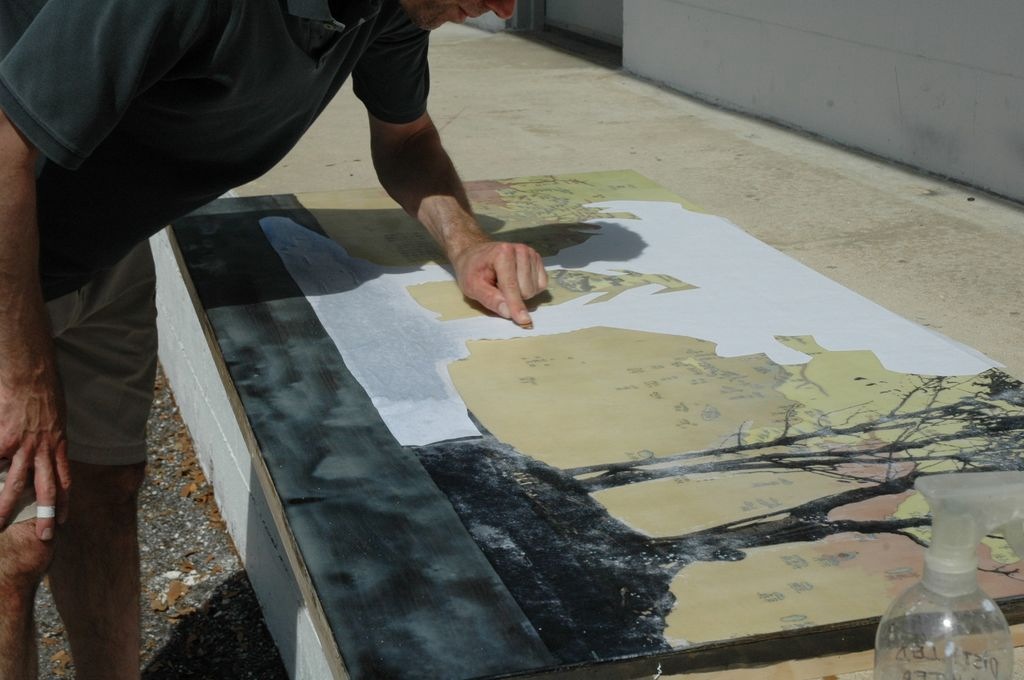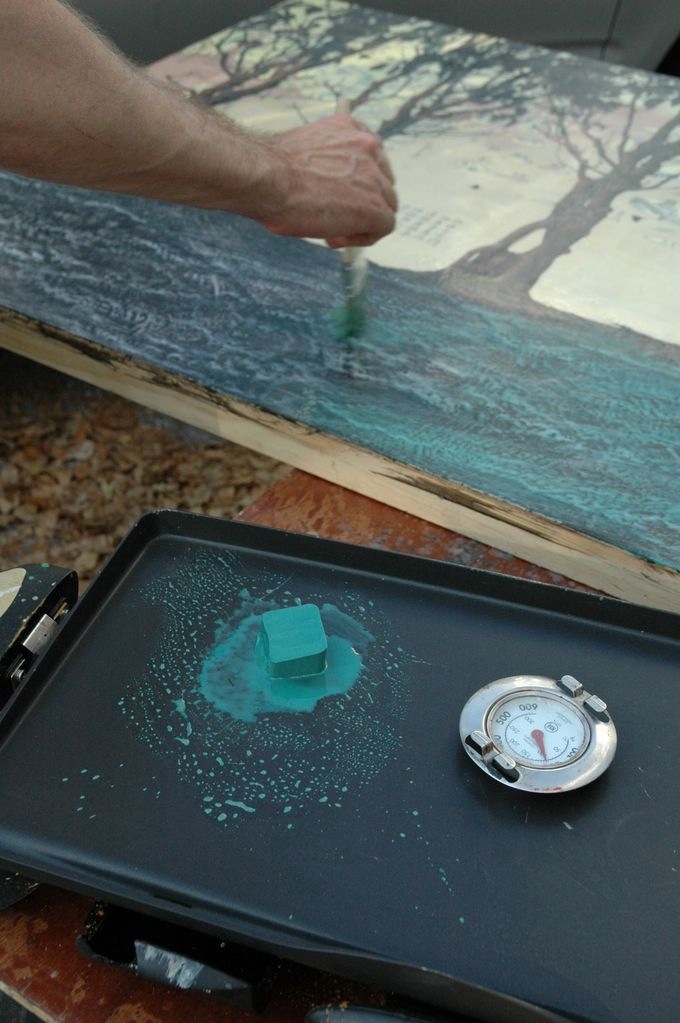From Snap! Celebrate the Photograph
Continuing our Q &A series with this year’s Snap! artists, we decided to talk technique and creative process with local artist Jeff League, whose images can be seen in Snap!’s HOMEGROWN Exhibit(local Central Florida photographers) at Orlando Museum of Art. Jeff’s artistic process is rare and complex with unique and striking results. Here’s what he shared with us…
Snap!: Your artwork is not straight photography, but rather, incorporates photographic elements in combination with the rare medium of encaustic painting. How did you come to this particular art style and process? What about it resonates for you?
JL: I was searching for another medium that would allow me to create my own imagery and be able to express more than I had with straight photography. I saw a photo transfer demonstration and was intrigued. Building up the piece in multiple layers creates an atmosphere and depth, an almost three dimensional quality not present in my previous work.
Snap! Your images incorporate a lot of nature elements, with birds and trees appearing most often. What about those subjects most intrigues you?
JL: The crows I use in much of my work historically represented the messenger in many cultures; for example in Scandinavia, messenger to the Norse gods. In many pieces the theme involves communication or the relationship of the individual to the global society; the message has multiple interpretations. Like the crow, I want my audience to pay attention to what’s happening to the natural world around them.
Snap! Tell us a little bit about the process of creating one of your images. How does the work unfold from initial concept to the final image we enjoy on canvas?
JL: I start with my idea and pull together my photos, or take new ones for the different elements in each composition. The first layer on my boards is water color paper, or a scan of an antique map printed on watercolor paper. After painting my background in watercolor, I paint on a layer of encaustic medium (beeswax & tree resin, sometimes with pigment added). Next, I scrape and then flame the surface with a blowtorch to level it, then transfer and hand burnish the first layer of photography (photocopied & cut into the different elements so I can place them upside down). The photo ink transfers onto the waxy surface, and I peel the paper away.

Transferring a copy of my photo in reverse over the background and first layers of clear encaustic medium.
I repeat this process, building the image in layers, and painting in details by hand, sometimes adding metal leaf or oil stick:

Painting foreground with a mixture of beeswax, tree resin, and pigment.
I flame and polish the final layer of un-pigmented encaustic to a high sheen, giving it a glowing and translucent finish.
Snap! Your art is included in Snap!’s HOMEGROWN exhibit of local Central FL photographers (hosted at Orlando Museum of Art). What do you hope event attendees walk away with after viewing your work and the collective exhibit?
JL: Developments in technology have made a variety of photographic techniques easily accessible to a whole new generation. Many artists go through an elaborate pre-shoot planning process, building sets and props, that the casual observer might not even be aware of. For the fine artist, photography is just one of many tools available to convey a message. But for the artist, the message, the story, is the most important part, not just the technique.
Snap!: What’s next for you and your work after your participation in Snap! Orlando?
JL: I’ve been sharing my message through photography, first in black and white, then Polaroid transfer, now in combination with painting. Next, I plan to continue the story by incorporating the photographic elements with glass. The story will continue, but become even more three dimensional and sculptural.